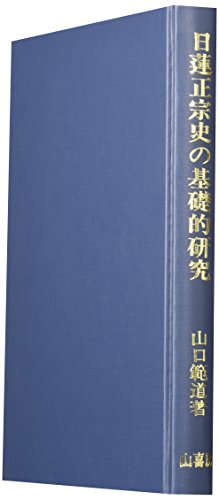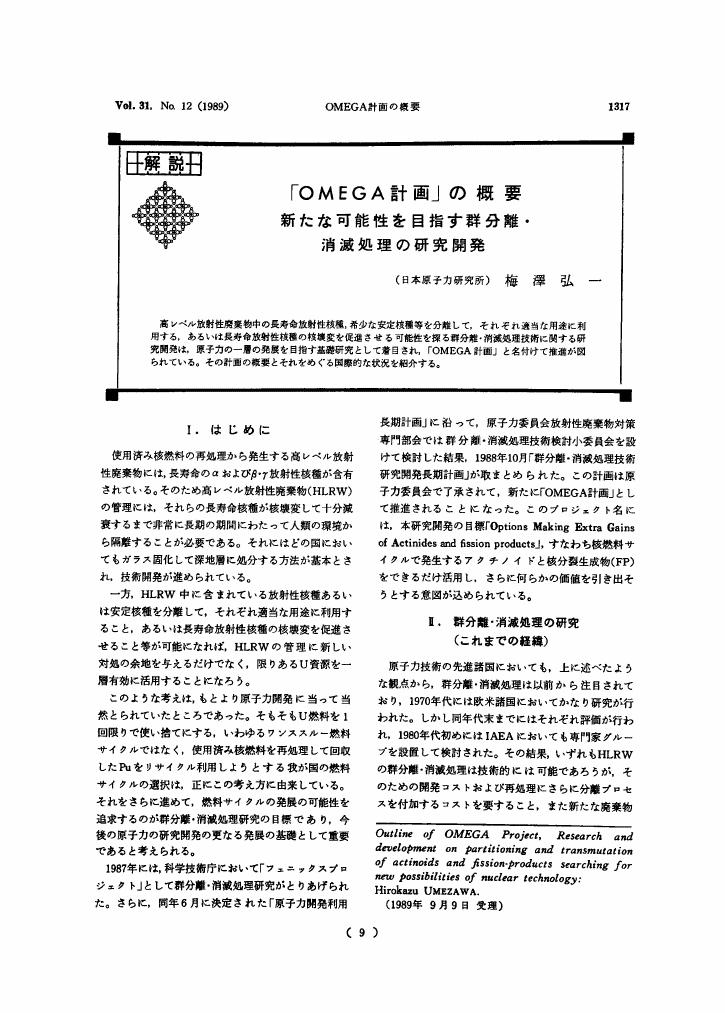- 著者
- Joohyun JUNG Mincheol CHOI
- 出版者
- 公益社団法人 日本獣医学会
- 雑誌
- Journal of Veterinary Medical Science (ISSN:09167250)
- 巻号頁・発行日
- pp.14-0518, (Released:2014-12-27)
- 被引用文献数
- 5
A one-year-old, castrated male domestic short hair cat was admitted with a history of anorexia, regurgitation and pyrexia for two days. Fever and leukocytosis were identified. There were a large soft tissue density oval mass in the caudal mediastinum on thoracic radiographs, a fluid-filled oval mass in the caudal mediastinum on ultrasonography, and left-sided and ventrally displaced and compressed esophagus on esophagram. On esophageal endoscopy, there were no esophageal abnormalities. CT findings with a fluid filled mass with rim enhancement indicated a caudal mediastinal paraesophageal abscess. The patient was treated with oral antibiotics, because the owner declined percutaneous drainage and surgery. The patient was admitted on emergency with severe respiratory distress; and ruptured abscess and deteriorated pleuropneumonia were suspected. With intensive hospitalization care and additional antibiotic therapy, the patient had full recovery.
2 0 0 0 OA 幾何新指導 : 受験本位
2 0 0 0 IR 中世前期における騎士の戦術と武装
- 著者
- 堀内 一徳
- 出版者
- 奈良大学史学会
- 雑誌
- 奈良史学 (ISSN:02894874)
- 巻号頁・発行日
- vol.10, pp.112-126, 1992-12
マルク・ブロックによると、西欧ではカロリソグ時代以降、甲冑、槍、楯、剣で武装し騎馬で戦うエリートの戦士が存在し、十世紀頃に鐙が使用されると、長い槍がそれまでの短い槍に代り、また鼻当のちに面頬が加わり、さらに鎖帷子は皮か織物の綴合せの上に鉄の環や板を縫い合せて精巧となるが、このような武装は高価であり、富裕な人々のみが購うことができた。十二世紀には、騎士階級はその伝統をもたない家門の子弟を次第に排除し、以後社会の下層の者に対して門戸を閉し、十三世紀中頃から貴族身分を形成していったという。今日、騎士の起源が八世紀に遡るとか、また騎士が中世の貴族の起源であるという説は、大方のコソセソサスを得られない。しかしカロリソグ時代から十二世紀にかけての西欧の軍事技術の著しい進歩が、騎士階級ないしは身分の形成を促したことは間違いない。以下においてカロリソグ時代から一〇六六年のへースティソグズの戦までの期間に騎士が参加した主要な戦いにおけるかれらの戦術および武装について述べてみたい。
- 著者
- 高田 和夫
- 出版者
- 政治経済学・経済史学会
- 雑誌
- 土地制度史学 (ISSN:04933567)
- 巻号頁・発行日
- vol.19, no.2, pp.53-72, 1977-01-20
Russian capitalism reached the stage of industrial capitalism in the middle of 1880's, despite the fact that it was still dominated by the agricultural sector. It was during this period that a large labour dispute in January of 1885 arose at Nikol'skaya Manufacture owned by Morozov who was one of the largest Russian cotton industrialists in the Vladimir Province. The purpose of this paper is to look at this dispute as a resistant movement by the mass against the structural change of Russian capitalism. The majority of labourers of the cotton industry came from the agrarian districts, principally because they had to supplement the family income,--the land units being too small to be viable. Without the factory labourer, the agricultural family would naturally suffer from the income crisis, and so the cotton industry labourers supported both the agricultural family's economic system (otrabotka) and the system of factory labour. The factory labourers at that time had a "primitive" labour relationship in Russia which had a dual structure. This structure was supported by the community,--though it could be said that they were being exploited not only by the employer who controlled the right to employ the labourers, but also by the community representatives (i. e. the dual structure). In spite of the organization and agitation of a few skilled workmen who had experienced the modern labour movement in St. Petersburg in 1870's, this labour dispute had a different movement form, a form similar to agrarian terror. The details and character of this dispute were different from those of the dawn movements in St. Petersburg in 1870's. First of all, the core of this movement were ordinary non-skilled workmen who were closely linked with the agrarian districts and so it isn't correct to say that the efforts of a few skilled workmen to instill the knowledge and experience of the movement in St. Petersburg into them were successful. The aims of non-skilled workmen which were formed in consequence of the permeation of capitalism into the agrarian districts were decisively different from the aims of skilled workmen. Therefore, in general, the experiences in St. Petersburg in 1870's were not followed and used in this Central Industrial Zone. The regulative powers of the agrarian community which affected the emergence of wage-labours formed here a quite different type of resistance to capitalism. As a result of this dispute, a new stage of labour movement began in European Russia. Taking this opportunity, the Tsarist government legistlated the new labour relations adjustment law in 1886.
2 0 0 0 日蓮正宗史の基礎的研究
- 著者
- 水吉 俊幸
- 出版者
- 日経BP社
- 雑誌
- 日経バイト (ISSN:02896508)
- 巻号頁・発行日
- no.196, pp.188-195, 1999-11
●Sambaを用いてLinuxシステムをWindowsのファイル/プリント・サーバとして利用するケースが増えている。●しかし,すでに運用しているWindows NTベースのネットワークにSambaサーバを設置する場合は,さまざまな注意が必要だ。●Windowsネットワークの仕組みを把握できていないと,突然,だれもログインできなくなったといった事態を招くこともある。
2 0 0 0 IR 大江健三郎とテクノロジー : 科学・技術・文学
- 著者
- 團野 光晴
- 出版者
- 金沢大学国語国文学会
- 雑誌
- 金沢大学国語国文 (ISSN:02863847)
- 巻号頁・発行日
- no.39, pp.30-41, 2014-03
2 0 0 0 井上雅雄先生の人と学問
- 著者
- 木下 順
- 出版者
- 立教大学
- 雑誌
- 立教経済学研究 (ISSN:00355356)
- 巻号頁・発行日
- vol.65, no.3, pp.213-238, 2012-01-20
2 0 0 0 うっ血乳頭を合併した脳脊髄液減少症の1例
- 著者
- 飯島 綾 石川 均 後関 利明 清水 公也 金井 昭文
- 出版者
- 日本神経眼科学会
- 雑誌
- 神経眼科 (ISSN:02897024)
- 巻号頁・発行日
- vol.31, no.3, pp.331-335, 2014-09-25 (Released:2014-12-17)
- 参考文献数
- 14
うっ血乳頭を合併した脳脊髄液減少症の1例を経験した.症例は60歳男性.自転車で転倒した後より,頭痛・めまい・吐気・耳鳴りが出現した.脳神経外科で画像上,慢性硬膜下血腫を認め,臨床症状からは脳脊髄液減少症の診断となり,硬膜外自家血注入を施行した.頭痛・めまい・吐気などの症状は改善したが,治療後1か月後に「焦点が合わない,歪む」との主訴で眼科を受診した.初診時両眼のうっ血乳頭を認めた.経過観察のみで徐々に乳頭腫脹および網膜出血は改善したが,硬膜外自家血注入は脳圧を上昇させる可能性も指摘されているため,今後,硬膜外自家血注入療法の際には,前後での眼科の診察が必要であると考えられた.
- 著者
- 石川 准
- 出版者
- 一般社団法人情報処理学会
- 雑誌
- 情報処理 (ISSN:04478053)
- 巻号頁・発行日
- vol.36, no.12, pp.1133-1139, 1995-12-10
- 被引用文献数
- 37
2 0 0 0 ナゴルノ・カラバグ帰属決定交渉 (ソ連の民族問題<特集>)
- 著者
- 北川 誠一
- 出版者
- 拓殖大学海外事情研究所
- 雑誌
- 海外事情 (ISSN:04530950)
- 巻号頁・発行日
- vol.37, no.4, pp.p64-79, 1989-04
2 0 0 0 日本脂質介入試験の地域対照追跡調査
2 0 0 0 研修症例 男性からの非性愛的な受容を求めていた女性との心理療法
- 著者
- 稲員 修平
- 出版者
- 日本精神分析学会
- 雑誌
- 精神分析研究 (ISSN:05824443)
- 巻号頁・発行日
- vol.57, no.2, pp.173-178, 2013-04
2 0 0 0 OA 「OMEGA計画」の概要
- 著者
- 梅澤 弘一
- 出版者
- 一般社団法人 日本原子力学会
- 雑誌
- 日本原子力学会誌 (ISSN:00047120)
- 巻号頁・発行日
- vol.31, no.12, pp.1317-1323, 1989-12-30 (Released:2009-04-21)
- 参考文献数
- 13
- 被引用文献数
- 2
- 著者
- 日埜 博司
- 出版者
- 流通経済大学
- 雑誌
- 流通經濟大學論集 (ISSN:03850854)
- 巻号頁・発行日
- vol.31, no.3, pp.A1-A25, 1997-01
2 0 0 0 絵文字チャットによるコミュニケーションの提案と評価
- 著者
- 宗森 純 大野純佳 吉野 孝
- 出版者
- 一般社団法人情報処理学会
- 雑誌
- 情報処理学会論文誌 (ISSN:18827764)
- 巻号頁・発行日
- vol.47, no.7, pp.2071-2080, 2006-07-15
- 被引用文献数
- 11
絵文字はテキスト文章にニュアンスを付加するために携帯電話などで 急速に普及し,中国など外国でも使用されている. そこで絵文字のみで文章を作成し,会話を行っても通じ合えるのではないかと考え,絵文字のみでチャットを行うためのシステムを開発した. 絵文字は550個用意した. このシステムを実際に"日本人学生の仲良しの友達同士","日本人学生の普段喋らない者同士","日本人学生と留学生(中国人4人,マレーシア人1人,ベトナム人1人)"で 適用実験を各6回ずつ,合計18回行い,その結果を考察し,絵文字のみを使ったコミュニケーションが可能か検討した. その結果,以下のことが分かった. <(1)ごく単純な会話のやりとりなら絵文字を 組み合わせるだけの文章でも70%以上は通じ合える. (2)絵文字を組み合わせることで会話する際の 日本人学生と留学生の間における文章構成の違い,また,アンケートにおける評価の違いは見いだせない. 日本人学生が留学生と同じ順序で絵文字を書く傾向がある. (3)友達同士などで深い会話をするときには,固有名詞を使うため,さらに多くの絵文字を用意することや,固有名詞を入力できるようにするなどの対応が必要である.Pictographs have widely spread to add nuance to mails of mobile phones in Japan and foreign countries, e.g. China. We have developed a pictograph chat system, which can communicate each other using nothing but pictographs. We prepared 550 pictograph symbols. We applied the system for communication to 3 groups, which consist of the intimate friends group, the strangers group, and the Japanese students and foreign students group. The foreign students consist of Chinese (four persons), a Malaysian, and a Vietnamese. We have carried out experiences 18 times (six times in each experiment). We report the results of the experiments as below. (1) The subjects understood over 70% of the content of the very simple chat. (2) There seemed to be no difference between foreign students and Japanese students about the context of the chat and about the evaluation of the system. Japanese students tended to make the same context as foreign students. (3) Proper nouns should be prepared sufficiently. Proper nouns were used very well between intimate friends.
2 0 0 0 絵文字チャットによるコミュニケーションの提案と評価
- 著者
- 宗森 純 大野純佳 吉野 孝
- 出版者
- 一般社団法人情報処理学会
- 雑誌
- 情報処理学会論文誌 (ISSN:18827764)
- 巻号頁・発行日
- vol.47, no.7, pp.2071-2080, 2006-07-15
- 参考文献数
- 16
- 被引用文献数
- 11
絵文字はテキスト文章にニュアンスを付加するために携帯電話などで 急速に普及し,中国など外国でも使用されている. そこで絵文字のみで文章を作成し,会話を行っても通じ合えるのではないかと考え,絵文字のみでチャットを行うためのシステムを開発した. 絵文字は550個用意した. このシステムを実際に"日本人学生の仲良しの友達同士","日本人学生の普段喋らない者同士","日本人学生と留学生(中国人4人,マレーシア人1人,ベトナム人1人)"で 適用実験を各6回ずつ,合計18回行い,その結果を考察し,絵文字のみを使ったコミュニケーションが可能か検討した. その結果,以下のことが分かった. <(1)ごく単純な会話のやりとりなら絵文字を 組み合わせるだけの文章でも70%以上は通じ合える. (2)絵文字を組み合わせることで会話する際の 日本人学生と留学生の間における文章構成の違い,また,アンケートにおける評価の違いは見いだせない. 日本人学生が留学生と同じ順序で絵文字を書く傾向がある. (3)友達同士などで深い会話をするときには,固有名詞を使うため,さらに多くの絵文字を用意することや,固有名詞を入力できるようにするなどの対応が必要である.Pictographs have widely spread to add nuance to mails of mobile phones in Japan and foreign countries, e.g. China. We have developed a pictograph chat system, which can communicate each other using nothing but pictographs. We prepared 550 pictograph symbols. We applied the system for communication to 3 groups, which consist of the intimate friends group, the strangers group, and the Japanese students and foreign students group. The foreign students consist of Chinese (four persons), a Malaysian, and a Vietnamese. We have carried out experiences 18 times (six times in each experiment). We report the results of the experiments as below. (1) The subjects understood over 70% of the content of the very simple chat. (2) There seemed to be no difference between foreign students and Japanese students about the context of the chat and about the evaluation of the system. Japanese students tended to make the same context as foreign students. (3) Proper nouns should be prepared sufficiently. Proper nouns were used very well between intimate friends.
- 著者
- 津上 英輔 藤田 一美
- 出版者
- 東京大学大学院人文社会系研究科・文学部美学芸術学研究室
- 雑誌
- 美学藝術学研究 (ISSN:13426095)
- 巻号頁・発行日
- vol.15, pp.202-188, 1997-03-24 (Released:2007-05-31)



